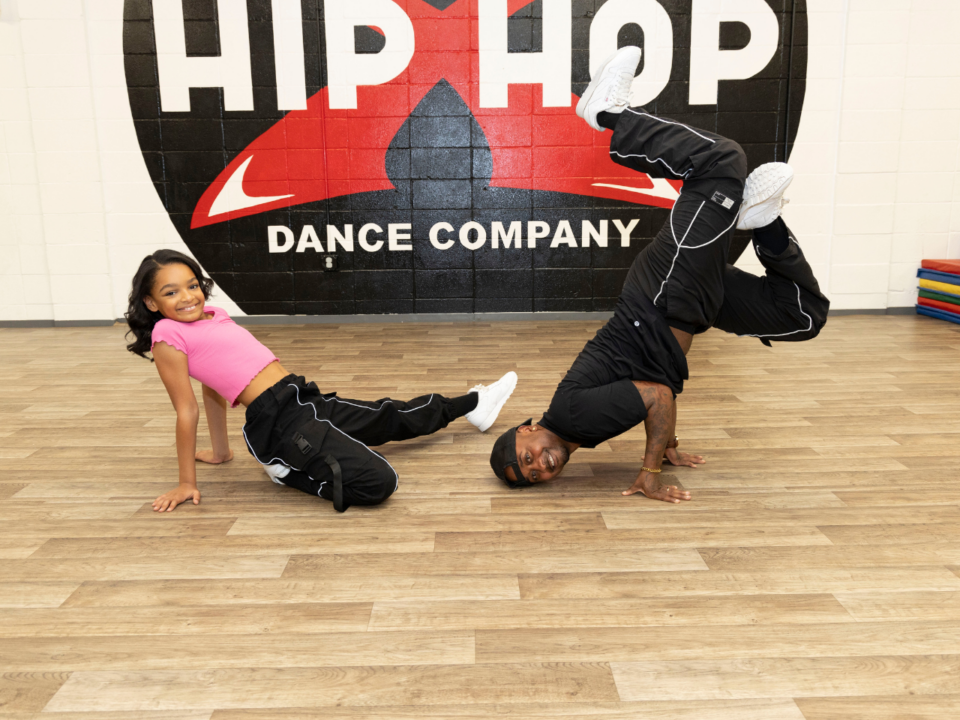Originating in the Bronx, New York in the late 1970s, breaking or B-boying/B-girling refers to the dance style in which b-boys and b-girls move to the breakbeats (a repeated sample of a drumbeat) of a song. Over the years, the dance has gained popularity, acquired mainstream recognition and a moniker of “breakdancing” by the media, and transcended borders, reaching countries such as Brazil, Cambodia, and even Japan. This year, breaking will take center stage at the Olympics.
What started as a predominantly male-centered style of dance has since expanded to include more females, and the style has even inspired a younger generation to begin practicing the art form.

THE POWER OF EXPRESSION
Artivism Dance Theatre in New Orleans and Hip Hop X in Baton Rouge are two studios that are guiding young artists in learning the elements of breaking, all while providing them with a space to grow both mentally and physically.
Sophia Rabinovitz, the Founder and Artistic Director of Artivism Dance Theatre, shares, “Breaking is very much a dance style of strength, particularly core strength. A lot of what happens, people assume has to do with upper body strength, but it’s really hugely abdominal strength, core strength, and timing and coordination. It’s about when you are connecting and firing with which muscle at what time in order to make it happen, and if you miss that timing, the moves are not going to happen.”
Along with increasing their athletic ability, dancers are learning work ethic and discipline, and challenging themselves mentally. Brian Watson, owner of Hip Hop X, shares, “It gives them a space to go and let loose. There are still rules that apply, but from health problems to emotions, learning how to be disciplined, knowing when to show up on time for things, [they’re] learning that through dance, which is basically work ethic. On a mental level, it helps them mentally.”
Through breaking, dancers are especially able to express themselves in a powerful way and push themselves to try something new.
Arouna Guindo, a Hip Hop dancer and choreographer from West Africa, has been an instructor for over 10 years, and he’s currently an instructor at Artivism Dance Theatre. “Breaking is really particular, because first of all, in breaking, you use a lot of power. We say a power move is the child of frustration, because you put all of this frustration, all of this anger, and stress in the movement, in your dynamic, in the muscles, and this just gives you the power to do all of this. It’s kind of egotistical, somehow selfish at first, because you have to really go and face your own fears and your own limitations and go above them.”
Learning the art of breaking has allowed these young dancers to also transform how they feel about themselves.
Kit and Bo B., two dancers at Artivism Dance Theatre, each pursued breaking and Hip Hop classes due to their interest in the dance styles. They both agree that while learning new moves can be tricky, the experience as a whole is incredibly rewarding and they feel they are better dancers as a result.
Simone L., a dancer at Hip Hop X, began dancing as a way to help express herself. She’s currently learning a variety of styles at the studio, including breaking, and she quickly fell in love with the sharp movements and levels to the dance. Throughout her experience, Simone has seen a change in herself. “I feel way more confident and stronger. I also love how no one judges another person, because we’re all doing something similar, and you know how hard it is, so no one’s judging,” she says.

A COMMUNITY EXPERIENCE
These inclusive and supportive environments are created with help from the owners, instructors, and the dancers all coming together to learn and share their knowledge.
Guindo’s interest in teaching started when he was younger and practicing Capoeira, teaching himself the moves
and dynamics. As he learned new moves, others wanted to learn how he did them. “When I was showing them, I discovered that I was learning more. I would master the craft I was doing more by transmitting,” he shares.
The give and take of knowledge helps everyone to thrive while learning, too. Guindo shares that being a part of the breaking culture is being a part of a strong community, whether competing in a battle or participating in a cypher. A cypher is a circle in which b-boys and b-girls can take turns entering the circle to showcase their moves or test new ones.
“In a battle, you improve everything that you want to do. We [also] have the principle of exchange and cypher, where you can just express yourself. The circle is different from the setting of the theatre, where the stage is over there and the audience is watching a screen, but the setting of Hip Hop is kind of like a setting of our traditional dances in Africa. You feel the energy of everybody participating–actively and physically. That’s one of the biggest parts of the community,” Guindo says.
GROWING AND THRIVING
With breaking on the Olympic stage this year, interest in the dance will only continue to grow. However, to truly be successful in the dance, one must be ready to be up for the challenge.
Rabinovitz explains, “[Breaking’s] physically hard, not just muscularly, but endurance wise. There’s a level of endurance that you have to be able to keep training and keep pushing through. You’re not going to learn choreography, and then you know the moves and you can repeat it. You have to drill a movement over and over and over again to get it, and that takes a certain level of maturity. As it gets more and more popularized, more mainstream, and more of an athletic activity, there are younger and younger kids who are invested in it. It just depends on the community. If you go to Houston, you can see six year olds breaking. New York, yes, for sure, LA, France, Paris, London. If you go to Houston, they have a thriving breaking community. We don’t have that as much here, but we’re working on it, you know, we’re building.” For more information, visit artivismdance.com and facebook.com/hhxperience.





